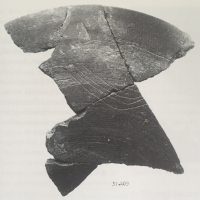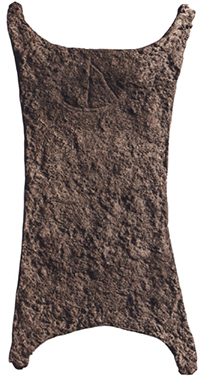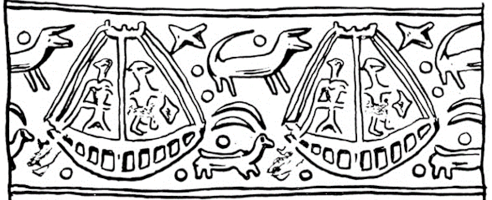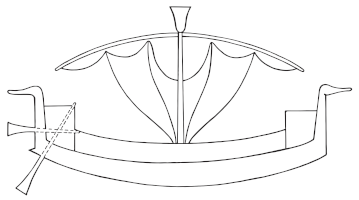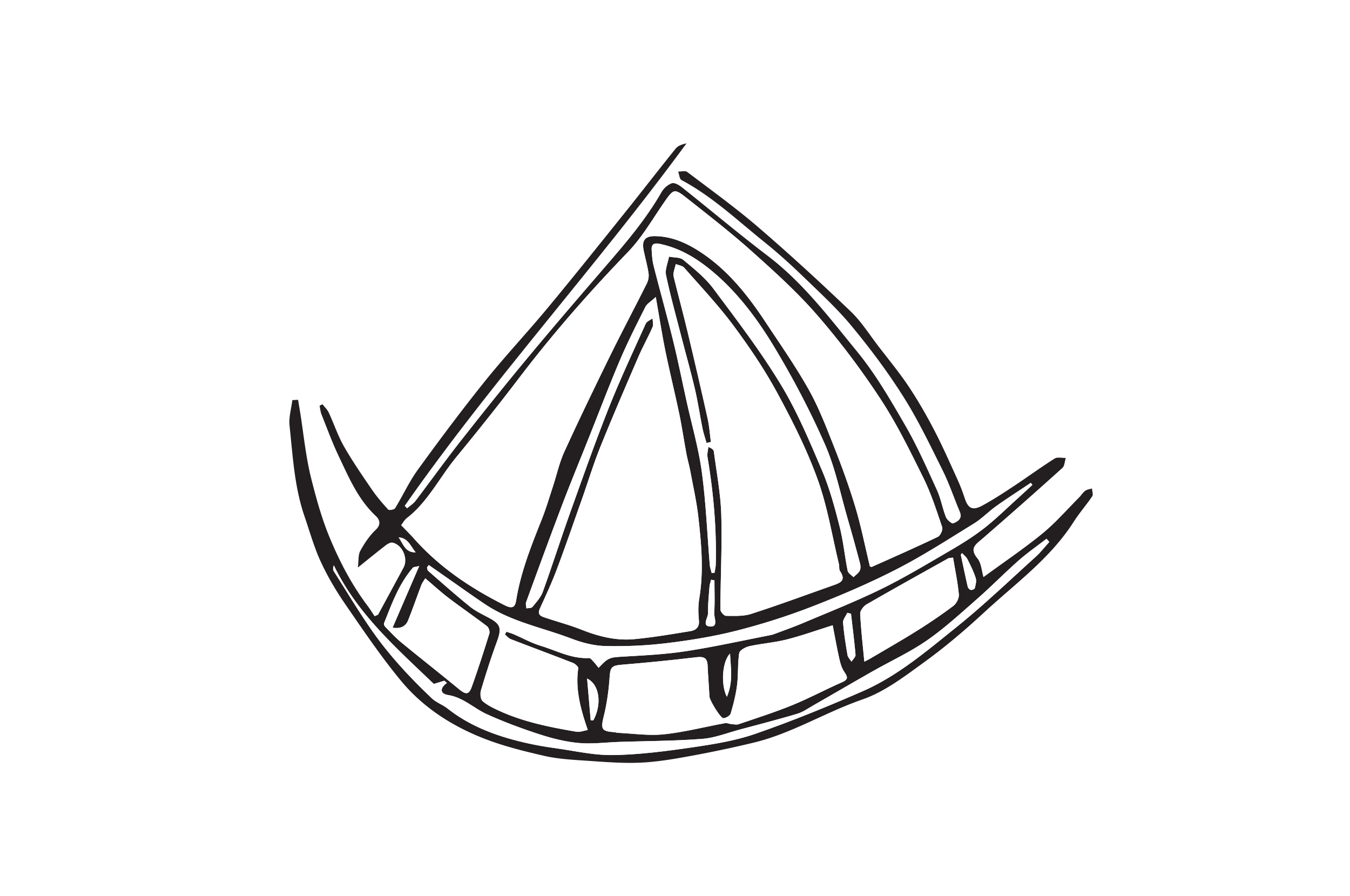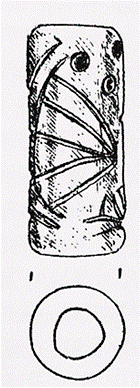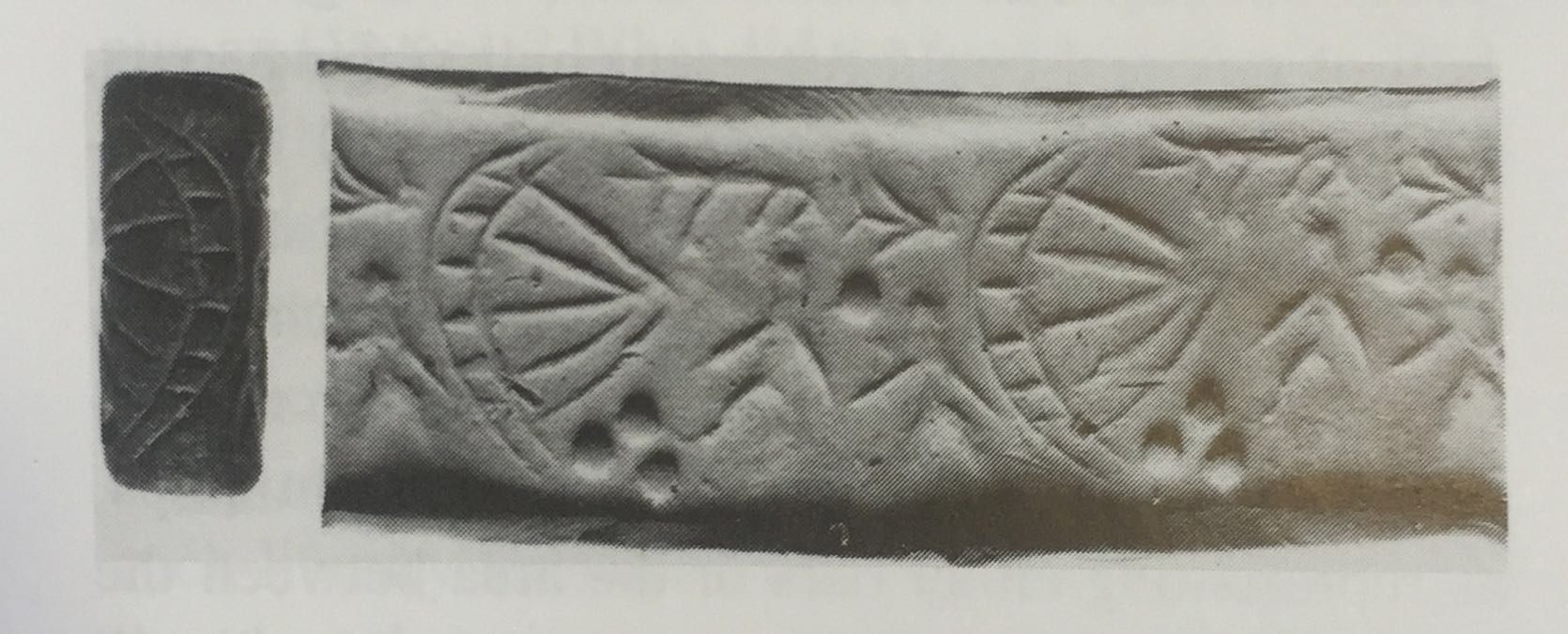Crescentic hull formed by two nearly parallel lines denoting the keel and gunwale, connected by six short vertical lines. The two horizontals come closer together towards the extremities of the vessel but do not meet. The vertical lines of the hull are somewhat difficult to interpret, but possibly represent the ribs of the hull. Their interpretation as oars is highly unlikely, although their reading as rower's galleries is slightly more plausible. The problem with reading them as rower's galleries is that the vertical lines run all the way down to the keel line. The absence of oars is likewise an argument against this interpretation. There are no stem ornaments. The mast is amidships, with double oblique lines on each side that represent the rigging, either stays or lifts. The outer oblique line on each side runs from the top of the mast to the gunwale near the bow and stern respectively, while the inside lines begin slightly lower down the mast and attach midway on the gunwale fore and aft. The direction of the ship is uncertain since no steering oars are depicted and both extremities are identical. The closest parallel to this vessel comes from the only other ship depiction on a cylinder seal from the eastern Mediterranean region - the Cypriot seal which is also of LBA date. The difference is that the Ekron ship lacks a crow's nest, and the figures are not depicted inside it. A trio of drilled dots is observable on the conical seal with a ship depiction from Beth Shemesh.
Br ship
L17
14th century B.C. (LBA IIA, first phase of Stratum IX)
Tell Miqne Ekron, Field INE Area 6 (make-up of beaten earth Surface 6048), northeastern corner of tell
L: 2.5 cm; diam.: 1 cm
Dark red cylinder seal made of andesine, with a hole bored slightly off-center through its length
Gittlen 2007: 25-28, fig. 1
The seal's material is non-local, a dark red andesine which is a very hard igneous mineral. The design of the seal was carved at right-angles to the direction in which the seal was rolled which is rather uncommon. This was clearly intended to ease the engraving of the central motif of a ship. There are three circular depressions or dots arranged in a triangle drilled on the right side of the seal just above one of the ship's extremities. On the other end of the ship are two branches or tree-like objects. Two figures are positioned on the right side of the seal directly above the mast and the trio of drilled dots. They do not appear to relate either to the ship or the branches, and seem to be in motion. They are separated by a drilled dot that may serve as a spacer for the motifs. All elements are well incised and clearly defined, in particular the dots. Gittlen hypothesizes on a possible cultic significance due to the branch motif.
Gittlen, B.M. 2007. “Sailing up to Ekron: a Nautical Seal from Tel Miqne-Ekron,” in S. Gitin, S.W. Crawford and A. Ben-Tor (eds.) "Up to the gates of Ekron”: essays on the archaeology and history of the eastern Mediterranean in honor of Seymour Gitin. Jerusalem: W.F. Albright Institute of Archaeological Research, pp. 25-28.


